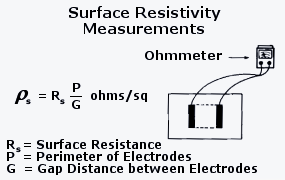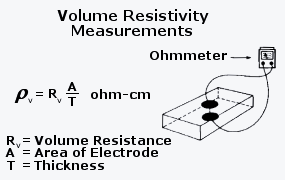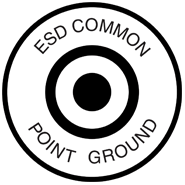From April 2022, a new tax on plastic packaging will be in place in the UK. Which products will be affected, how much is it, what penalties and sanctions are in place if manufacturers don’t comply, and what steps should the industry be taking now?

Disclaimer: The below notes reflect opinion and views as of 02/11/2021 and is a general summary of the legal position in England and Wales. It does not constitute legal advice.
Many of us make efforts to reduce our plastic usage in one way or another, but the UK government has now taken steps to target manufacturers and importers of plastic packaging by introducing a new plastic packaging tax (PPT); a tax, which, apparently, isn’t about revenue creation but has more exalted aims in mind – reducing the use of new plastics and increasing plastic recycling.
Which products will be affected by PPT?
PPT will be levied on plastic packaging that contains less than 30% recycled plastic. Imports of products in plastic packaging, such as drinks in plastic bottles, will also be caught. “Plastic packaging” will be classified as such if plastic is the heaviest component.
Rather surprisingly, given the environmental aims of PPT, “greener” plastics, such as biodegradable and compostable plastics, will still incur PPT (although this is currently being reviewed by the government) and the definition of “recycled plastic” does not include organic recycling.
Certain exemptions will apply, and PPT will not be incurred where the plastic packaging is for use:
- With licensed human medicines
- As transport packaging to import goods into the UK, e.g., packaging to secure the safe transit of goods
- In aircraft, ship or railway stores for international journeys, i.e. not released into the UK.
Exported goods will also be exempt from PPT, provided that they are exported within 12 months.
How much is PPT?
The rate of PPT will be £200 per metric tonne of plastic packaging (that contains less than 30% of recycled plastic).
Who will pay PPT?
PPT will be charged from 1 April 2022 and potentially, everybody, from the largest plastic packaging manufacturer to the corner shop customer buying a packet of pasta, will see its effects. Although PPT will be levied on manufacturers and importers (both UK resident and non-UK resident) that manufacture (or import) ten metric tonnes of plastic packaging or more annually, the cost may well be passed along the supply chain to the end-consumers.
The draft legislation specifically provides that payment terms under existing contracts may be amended in order that the manufacturer or importer can pass on the PPT charge, although how this will affect business relations may well determine how often this option is used.
Any businesses that purchase plastic packaging (filled or not) should also bear in mind that liability for non-payment of PPT can be placed on other entities within the supply chain, i.e. not just the manufacturer or importer, if such entity “knew or had reasonable grounds to suspect that” PPT “had not been accounted for”. Government expects business customers to take “reasonable steps” to verify that payment has been made and intends to publish guidance on what constitutes adequate due diligence.
It would be no great surprise if this risk results in business customers requiring evidence of payment or some contractual assurance that payment has been made by the manufacturer or importer; requirements which will, no doubt, increase commercial complexity and the administrative burden on both parties. We must hope that the promised guidance will consider the commercial practicalities of such a provision.
What is clear is that contracts will need to specify whether costs are ex. PPT or inc. PPT, and invoices will need to state the applicable PPT amount.
Registration, filings and evidence
All manufacturers and importers of plastic packaging will need to register with HMRC unless they produce or import less than 10 metric tonnes in any 12-month period (regardless of the amount of recycled plastic that they use). The test to determine this is both forwards- and backwards-looking.
A business must register if:
- At any time after 1 April 2022, it expects to manufacture or import at least ten metric tonnes of plastic packaging in the following 30 days (registration must occur within 30 days of the first day that this condition is met); or
- It has manufactured or imported at least ten metric tonnes of plastic packaging in a 12-month period ending on the last day of a calendar month. If this applies, the business becomes liable for PPT from the first day of the next month and must register by the first day of the subsequent month. This second condition will initially be modified and will only look at the amount of plastic packaging which has been manufactured or imported from and including 1 April 2022.
(Imports that have not cleared customs or are not in free circulation in the UK are not included within these calculations.)
A group PPT registration is likely to be available and further details will be provided by government in due course, although it is expected that the ten metric tonnes test will be applied on a group basis, i.e. it will not be possible to disaggregate a business to avoid PPT. Where a group registration is made, all members of the group will be held jointly and severally liable for all the PPT debts of all group members.
Affected businesses will also be subject to increased record-keeping as they will need to maintain records to show:
- The total amount in weight and a breakdown by weight of the materials used to manufacture the plastic packaging (excluding packaging which is used to transport imported goods)
- The data and calculations used to determine if a packaging component is, for the most part, plastic and how much recycled plastic it contains
- The weight of exempted plastic packaging and the reason for the exemption
- The amount in weight of plastic packaging exported, and therefore the allowed relief from the tax.
Even where the recycled content test is met, businesses will need to register, file, and retain evidence to show that the relevant plastic packaging meets the threshold (plastic packaging will be assumed not to meet the recycled content test unless it is shown to do so).
Penalties and sanctions
Various civil and criminal sanctions and penalties apply under the draft legislation depending on the nature and severity of the offence. For example, failure to register with HMRC, failure to complete the requisite filings, or failure to pay the PPT due will incur a penalty.
Practicalities
Manufacturers and importers of plastic packaging should start to consider how the PPT regime will affect them and bear in mind that some effects may not be purely financial. For example:
- How much plastic packaging manufactured/imported will be taxed, i.e. how much currently falls foul of the 30% recycled plastic requirement?
- Consequently, what is the likely PPT liability?
- Who will bear this liability – the manufacturer/importer or their customers? And what conversations need to be had with customers in this regard?
- Can this liability be mitigated in any way, for example, an increase in the use of recycled plastic?
- How will the information required to determine the amount of PPT payable be documented, evidenced, and recorded?
- Who in the business will be responsible for complying with PPT requirements, collating the evidence, maintaining the records, and dealing with HMRC?
- Who will liaise with customers regarding increased costs and evidential requirements?
- What staff training will be required in relation to the new PPT legislation?
Disclaimer:
This note reflects opinion and views as of 02/11/2021 and is a general summary of the legal position in England and Wales. It does not constitute legal advice.









